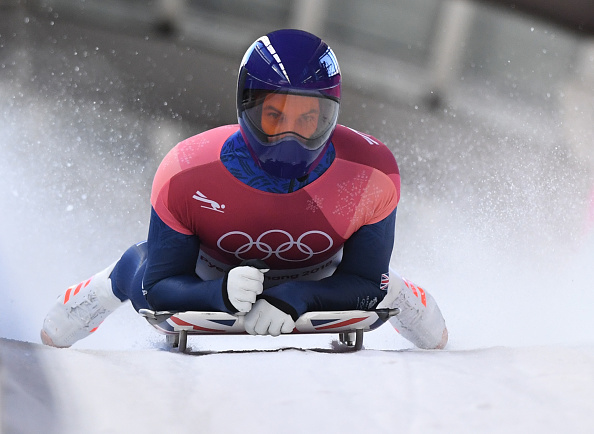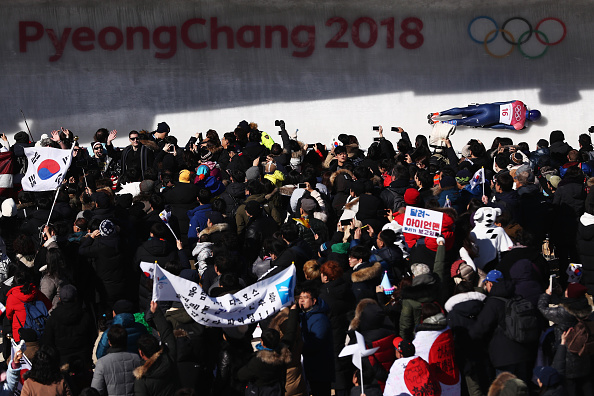Q&A with British Skeleton & EIS physiotherapist Louise Turner
As the Skeleton competition gets underway at the PyeongChang 2018 Winter Olympics, we speak to EIS physio Louise Turner, who answers our questions!
Can you give a brief overview of what your role as a physiotherapist for GB Skeleton involves?“My main role as a Physiotherapist for British Skeleton is to work collaboratively with the multidisciplinary team working towards the overall aim of increasing athlete availability to train and compete, maximise performance and enhancing athlete health and wellbeing.
“This includes identifying and delivering individualised athlete management and rehabilitation programmes as well as identifying and implementing targeted injury risk management strategies. As a nation without a home track, optimising athlete availability is a key factor in British Skeleton in order for athletes to be able to maximise their limited time on the ice over the Winter and perfect their sliding skills.

“The British Skeleton yearly calendar is split into two parts; with athletes completing their UK based training in the Summer aiming to improve their start performance and achieve peak physical conditioning ready for the Winter which is spent travelling around the various tracks in Europe, Canada and America, training and competing.
“My role is to deliver Physiotherapy services both locally and remotely in order to enable athletes to train and compete consistently across the whole year. In addition, you will often find me most days when we are on tour standing at the side of the track with an iPad in my hand filming athletes ready for analysis.”
What are the main areas of the body/ muscles you tend to work on with the athletes?
“Due to the explosive nature and flexed body position required at the start of a Skeleton run, the majority of my treatment time in season is spent maintaining hip mobility and thoracic and lumbar spine health. However, the high G forces experienced during sliding can also mean that the neck is another area of the body that requires regular attention during the sliding season.
“During summer training, lower limb pathologies such as muscle tears and tendinopathies can become more prevalent due to the high load and intensity of sprint training and gym work undertaken.”
What will be your main role/duties in PyeongChang?
“My main role at the Olympics will be to work with the multidisciplinary team to make sure that the four athletes (two men and two women) chosen to compete in Skeleton for Team GB are at their peak level of physical health throughout our stay in South Korea; from the holding camp in Seoul to official training in PyeongChang and ultimately for the competition days.
“This will include post travel treatments, supervised prehabilitation and pre and post training treatments; liaising closely with the S&C coach and sliding coaches to inform daily decision-making regarding training and performance.”

What do you expect to be the main challenges in your role out in PyeongChang?
“Personally, I have chosen to prepare for the Olympics with the mindset that this is just another competition. However, I am also aware that this is my first Olympic Games and it might be easy to get distracted by the environment. My main challenge therefore is to make sure that I enjoy this new experience and the environment to the maximum whilst also fulfilling my role within the British Skeleton team and Team GB to the best of my ability.”
How do you and your discipline work together with other disciplines as part of a multi-disciplinary team?
“The multidisciplinary team for Skeleton works closely together to monitor and enhance each athlete’s performance as well as their health and wellbeing. This is completed through weekly Sports Science and Exercise Medicine meetings as well as individual athlete case conferences and informal discussions.
“The benefits of working within a multidisciplinary team include the ability to share expertise from a variety of disciplines including Medicine, S&C, Coaching, Nutrition, Psychology and Performance Lifestyle which in the case of an injured athlete can enhance their recovery and minimise the impact on their availability.”
How long have you worked for the EIS for, why do you enjoy working for the organisation?
“I moved from working in the NHS to working for the EIS and British Skeleton 15 months ago and have not looked back since. The EIS provides a large support network of knowledge sharing and expertise beyond the expertise of your National Governing Body and provides constant support and opportunities to assist your professional development.

“The development of the Elite Sport Physiotherapy Accreditation is a prime example of this and the discipline specific knowledge store associated with this has already been a valuable and useful resource for myself especially when I have been travelling on season.”
What’s the best thing about working in a Winter Sport and working with GB Skeleton athletes?
“The best thing is probably the bobble hats! Joking aside, I love working in the sport because the GB Skeleton athletes are a great, dedicated bunch of people and make being on the road for long periods of time an enjoyable experience. Plus- we get to travel to some absolutely stunning parts of the world and the view from my office at times is awe-inspiring!”